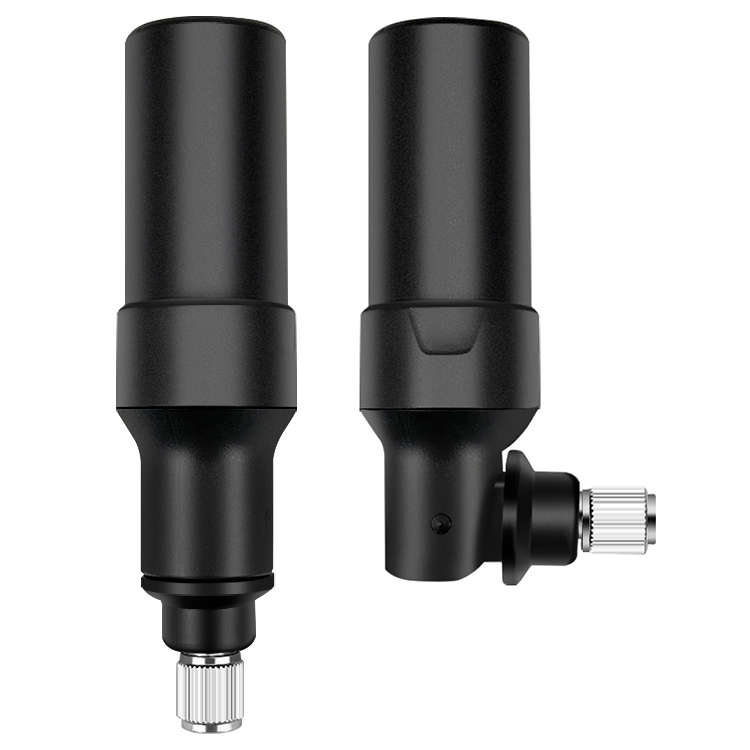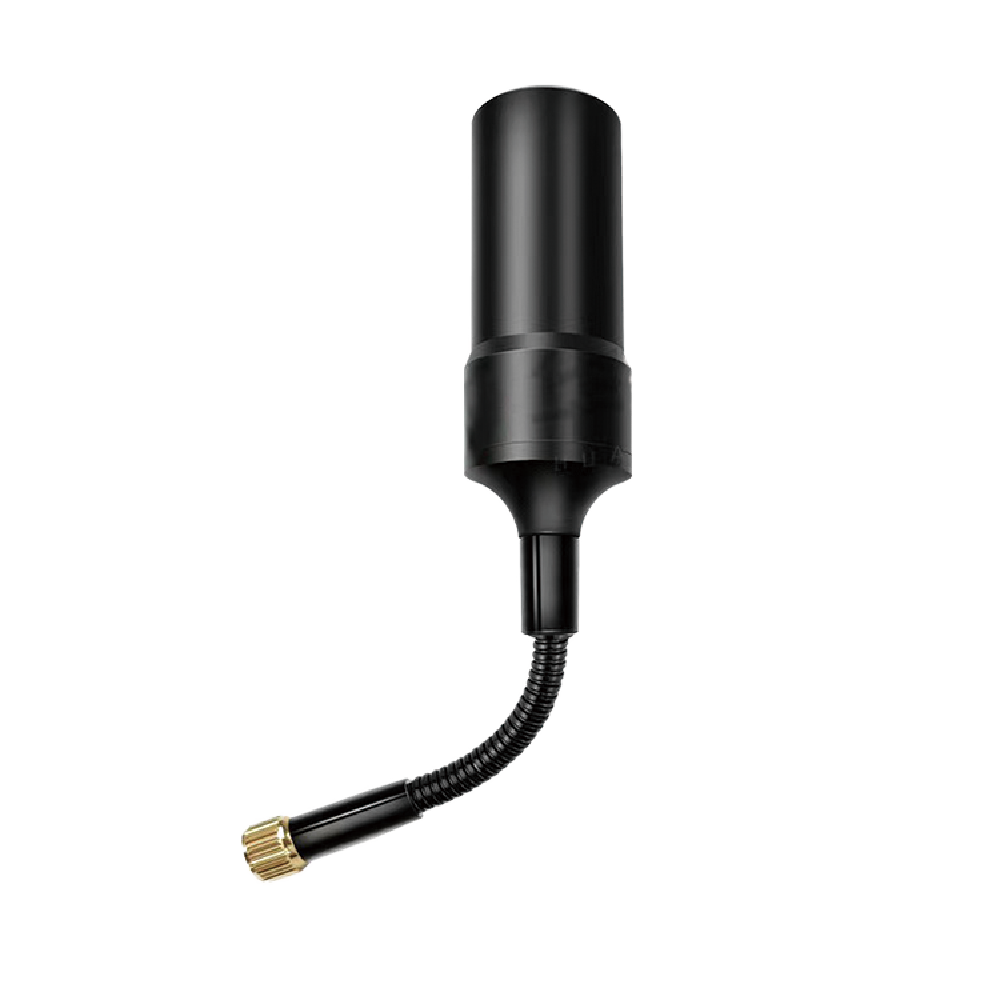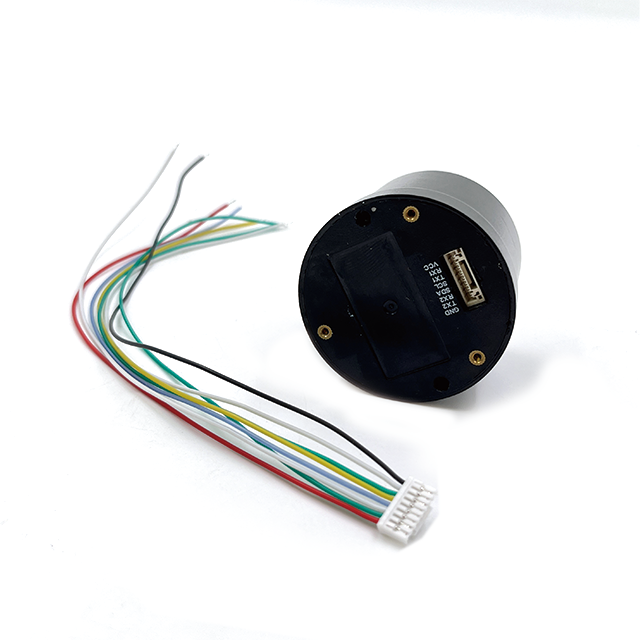Overview
GNSS antennas are transducers that convert the electromagnetic waves from satellite signals into electrical energy that can be processed by the drone's avionics system. The signals from GNSS satellites, including those from GPS (Global Positioning System), GLONASS (Globalnaya Navigatsionnaya Sputnikovaya Sistema), Beidou, and Galileo, are in the L - band portion of the radio - frequency part of the electromagnetic spectrum, typically between 1 and 2 GHz. These satellite constellations may broadcast on multiple L - band frequencies. For example, GPS has L1, L2, and L5 frequencies, each with different properties that can be used either independently for specific applications or in combination to enhance the accuracy of the drone's positioning.
The durability of GNSS drone antennas is a critical factor, especially considering the harsh operating environments that drones often encounter. Drones may fly in extreme weather conditions, such as strong winds, rain, snow, or even in dusty and sandy environments. They may also be subject to mechanical stress during take - off, landing, and in - flight maneuvers. A durable GNSS antenna is designed to withstand these challenges and continue to function reliably, ensuring the drone's safe and accurate operation.
Design and Construction
2.1 Antenna Types
Two of the most common types of GNSS antennas used in drones are helix (helical) antennas and patch antennas.
Helix Antennas: These antennas consist of a conducting wire wound around a cylindrical or conical core. The helix structure provides omnidirectional signal reception. Due to their pole - like radiation pattern, they are well - suited for applications where the drone needs to maintain continuous contact with satellites from various directions. The design of helix antennas can be optimized to control parameters such as pattern, polarization purity, and efficiency. For example, Maxtena's patented HelicoRE technology uses air as the dielectric core. This choice enables a stable and high - yield manufacturing process while minimizing the typical losses associated with ceramic materials. HelicoRE designs can integrate active circuitry and filtering directly into the antenna, pushing the limits of axial ratio, bandwidth, and pattern stability.
Patch Antennas: Patch antennas are typically flat and have a low - profile design. They are often used when space and weight are critical factors. A patch antenna consists of a radiating patch on one side of a dielectric substrate and a ground plane on the other side. The size and shape of the patch, as well as the properties of the dielectric substrate, can be adjusted to achieve the desired frequency range and radiation pattern. For instance, some patch antennas are designed with a built - in low - noise amplifier (LNA) and filtering, which can provide high performance and excellent gain and out - of - band rejection, even in contested and congested RF environments.
2.2 Material Selection
The choice of materials in the construction of GNSS drone antennas is crucial for ensuring durability.
For the Antenna Element: Conductive materials such as copper or aluminum are commonly used for the antenna element. Copper offers good electrical conductivity, which is essential for efficiently converting the electromagnetic waves into electrical signals. Aluminum, on the other hand, is lightweight, which is an advantage for drones where minimizing weight is a priority. In some advanced designs, materials with special conductive properties may be used to enhance the antenna's performance in specific frequency ranges or environmental conditions.
Dielectric Materials: Dielectric materials play a significant role in the performance of the antenna. As mentioned earlier, in helix antennas like those using HelicoRE technology, air can be used as the dielectric core to reduce losses. In other cases, materials such as ceramics or certain plastics are used. Ceramics can provide good electrical properties and mechanical stability. However, they may be more prone to losses compared to air - core designs. Plastics, especially those with specific dielectric properties, can be used to create antennas with a more flexible form factor and can be beneficial for applications where the antenna needs to be conformal to the drone's structure.
Enclosure Materials: The enclosure of the GNSS antenna needs to protect the internal components from the external environment. Materials such as rugged plastics or metal alloys are often used. Plastics can provide good protection against moisture, dust, and some mechanical impacts. Metal alloy enclosures can offer additional shielding against electromagnetic interference, which is important in environments with a high density of RF signals. For example, in industrial areas or near communication towers, a metal - alloy - enclosed antenna can better withstand the interference and maintain its performance.
2.3 Mechanical Design Considerations
The mechanical design of the GNSS antenna must account for the stresses and strains that the antenna will experience during the drone's operation.
Mounting Design: The antenna needs to be securely mounted to the drone. Different mounting options are available, such as using screws, adhesives, or magnetic mounts. Magnetic mounts can be convenient as they allow for quick installation and removal. However, they need to be strong enough to withstand the vibrations and forces during flight. Screw - mounted antennas provide a more permanent and secure attachment but may require more careful installation. The mounting design should also ensure that the antenna is positioned in an optimal location on the drone to receive the best possible satellite signals. For example, placing the antenna on the top of the drone, away from other components that may cause signal blockage or interference, is often a good practice.
Shock and Vibration Resistance: Drones experience significant vibrations during take - off, landing, and in - flight. The GNSS antenna must be designed to withstand these vibrations without getting damaged or having its performance degraded. This may involve using shock - absorbing materials in the mounting structure or designing the antenna itself to be more rigid and resistant to vibrations. Some antennas are built with internal damping mechanisms to reduce the impact of vibrations on the sensitive components inside. Additionally, the antenna should be able to withstand mechanical shocks, such as those that may occur if the drone collides with an object or experiences a hard landing.
Working Principles
3.1 Signal Reception
GNSS antennas are designed to receive signals from multiple satellite constellations. When a satellite broadcasts a signal, it travels through the atmosphere as an electromagnetic wave. The GNSS antenna on the drone intercepts these waves. The antenna's design, particularly its radiation pattern and polarization characteristics, determines how effectively it can capture these signals.
Radiation Pattern: Omnidirectional antennas, such as many helix antennas used in drones, are designed to receive signals from all directions in the horizontal plane. This is crucial as the drone may be moving in different directions, and it needs to be able to maintain contact with satellites regardless of its orientation. The radiation pattern of the antenna can be adjusted by changing factors such as the number of turns in a helix antenna or the size and shape of a patch antenna. For example, a helix antenna with a specific number of turns and a particular pitch can be designed to have a more focused radiation pattern in the upper hemisphere, where the satellites are located.
Polarization: GNSS signals are typically right - hand circularly polarized. The GNSS antenna on the drone is also designed to be right - hand circularly polarized to match the polarization of the satellite signals. This polarization matching ensures efficient signal reception. If the polarization of the antenna and the satellite signal do not match, there will be a significant loss in the received signal strength. For example, if a linearly polarized antenna is used to receive a circularly polarized GNSS signal, the signal strength will be greatly reduced, leading to inaccurate positioning information.
3.2 Signal Processing
Once the GNSS antenna receives the satellite signals, the process of converting these electromagnetic waves into useful positioning information begins.
Low - Noise Amplification: In active GNSS antennas, which are commonly used in drones, a low - noise amplifier (LNA) is an essential component. The received satellite signals are very weak, often on the order of nanovolts. The LNA boosts the signal strength while adding as little noise as possible. This is crucial because any additional noise introduced during the amplification process can degrade the quality of the signal and reduce the accuracy of the positioning. The LNA in the antenna is designed to have a very low noise figure, typically in the range of 1 - 2 dB, to ensure that the signal - to - noise ratio remains high.
Filtering: After amplification, the signal passes through a filter. The filter is designed to remove unwanted frequencies and interference. There may be other RF signals in the environment, such as those from mobile communication networks, Wi - Fi, or other electronic devices on the drone, that can interfere with the GNSS signal. The filter in the antenna is tuned to allow only the frequencies of the GNSS signals (in the L - band range) to pass through, while rejecting other frequencies. This helps to improve the purity of the received signal and enhance the accuracy of the positioning.
Delivery to the Receiver: The processed signal is then sent to the GNSS receiver on the drone. The receiver uses the information from multiple satellite signals to calculate the drone's position, velocity, and time. By measuring the time it takes for the signals from different satellites to reach the antenna, the receiver can use a process called trilateration to determine the drone's location in three - dimensional space. The accuracy of this calculation depends on the quality of the signals received by the antenna, as well as the algorithms used by the receiver.
Advantages and Challenges
-
4.1 Advantages
Accurate Positioning: Durable GNSS drone antennas enable highly accurate positioning of the drone. This is essential for applications such as precision agriculture, where the drone needs to spray pesticides or fertilizers precisely over specific areas of a field. In mapping and surveying, accurate positioning ensures that the data collected by the drone is reliable and can be used to create detailed and accurate maps. For example, in a construction project, a drone with a precise GNSS antenna can be used to survey the site accurately, helping in the planning and execution of the project.
Reliability in Harsh Environments: The durability of these antennas means that they can continue to function in harsh environmental conditions. In coastal areas, where the antenna may be exposed to salt - laden air, a well - designed and constructed GNSS antenna can resist corrosion and maintain its performance. In high - altitude or cold - climate regions, the antenna can withstand low temperatures and strong winds without significant degradation in signal reception. This reliability is crucial for applications like search and rescue operations in remote and harsh terrains.
Multi - Constellation and Multi - Frequency Capability: Many modern durable GNSS drone antennas are capable of receiving signals from multiple satellite constellations (such as GPS, GLONASS, Beidou, and Galileo) and multiple frequencies. This multi - constellation and multi - frequency capability enhance the accuracy and availability of the positioning information. For example, if one satellite constellation experiences interference or outages, the antenna can still receive signals from other constellations, ensuring continuous operation of the drone. Additionally, using multiple frequencies can help in reducing errors caused by atmospheric effects, such as ionospheric delay.
4.2 Challenges
Electromagnetic Interference: In today's highly connected world, there is a significant amount of electromagnetic interference in the environment. Mobile communication networks, Wi - Fi routers, and other electronic devices emit RF signals that can interfere with the GNSS signals received by the antenna. This interference can lead to inaccurate positioning or even loss of signal. For example, in a crowded urban area with a high density of mobile towers and Wi - Fi networks, the GNSS antenna on a drone may struggle to receive clear signals. To mitigate this challenge, advanced filtering techniques and shielding designs are being developed, but it remains an ongoing issue.
Size, Weight, and Power Constraints: Drones have limited space, weight capacity, and power resources. The GNSS antenna needs to be compact and lightweight to avoid adding excessive weight to the drone, which can affect its flight performance and endurance. At the same time, active antennas, which are often more effective in signal reception, require power to operate. Balancing the need for a high - performance antenna with the size, weight, and power constraints of the drone is a significant challenge. For example, in a small, lightweight drone designed for indoor photography, finding an antenna that is both compact and powerful enough to provide accurate positioning without consuming too much power is a difficult task.
Multipath Propagation: Multipath propagation occurs when the satellite signals reach the antenna via multiple paths, such as direct and reflected paths. This can cause interference and inaccuracies in the positioning. In urban canyons or near large reflective surfaces like buildings or bodies of water, multipath propagation is more likely to occur. Some antenna designs, such as helix antennas with specific radiation patterns, are better at rejecting multipath signals. However, completely eliminating the effects of multipath propagation remains a challenge, especially in complex environments.
Applications and Future Trends
-
5.1 Current Applications
Agriculture: Drones equipped with durable GNSS antennas are increasingly used in precision agriculture. They can be used to monitor crop health by capturing high - resolution images or sensor data. The accurate positioning provided by the GNSS antenna allows farmers to precisely map the location of areas with crop diseases, nutrient deficiencies, or water stress. Based on this information, they can apply fertilizers, pesticides, or water only to the areas that need them, reducing waste and environmental impact.
Infrastructure Inspection: Drones are used to inspect infrastructure such as bridges, power lines, and pipelines. The GNSS antenna enables the drone to fly along a pre - programmed path accurately, ensuring that all parts of the infrastructure are inspected. High - resolution cameras or sensors on the drone can capture images or data, and the precise location information from the GNSS antenna helps in identifying the exact location of any defects or damages.
Surveying and Mapping: In surveying and mapping applications, drones with GNSS antennas can quickly cover large areas and collect accurate geospatial data. This data can be used to create detailed maps for urban planning, environmental monitoring, or land - use management. The accuracy of the GNSS antenna ensures that the maps are reliable and can be used for a variety of purposes.
5.2 Future Trends
Increased Integration with Other Technologies: In the future, GNSS drone antennas are likely to be more tightly integrated with other emerging technologies. For example, with the development of 5G communication networks, drones may be able to use the 5G infrastructure for data transfer while also relying on GNSS for positioning. There may also be more integration with artificial intelligence and machine learning algorithms. These algorithms can analyze the data collected by the drone in real - time and use the precise location information from the GNSS antenna to make more intelligent decisions, such as adjusting the drone's flight path based on the changing environment.
Miniaturization and Improved Performance: As technology advances, there will be a continued trend towards miniaturization of GNSS drone antennas while improving their performance. New materials and manufacturing techniques will be developed to create smaller and lighter antennas with better signal reception capabilities. This will enable the development of even smaller and more agile drones with enhanced positioning accuracy, opening up new applications in areas such as indoor navigation and micro - surveillance.
Enhanced Resilience to Interference and Multipath: Future GNSS drone antennas will focus on improving their resilience to electromagnetic interference and multipath propagation. This may involve the development of more advanced filtering techniques, adaptive antenna arrays that can adjust their radiation pattern in real - time to avoid interference, and new algorithms that can better handle multipath signals. These improvements will make drones more reliable in challenging environments, such as urban areas and industrial sites.
Conclusion
Durable GNSS drone antennas are essential components in the world of drone technology. They enable accurate positioning and navigation, which are crucial for a wide range of applications. The design and construction of these antennas involve careful consideration of factors such as antenna type, material selection, and mechanical design to ensure durability and high performance. The working principles of signal reception and processing are complex but well - understood, allowing for the efficient conversion of satellite signals into useful positioning information.
Despite the many advantages that durable GNSS drone antennas offer, there are also significant challenges, such as electromagnetic interference, size and weight constraints, and multipath propagation. However, ongoing research and development efforts are focused on overcoming these challenges. The future of GNSS drone antennas looks promising, with trends towards increased integration with other technologies, miniaturization, and enhanced resilience to interference.
As drone technology continues to evolve and expand into new applications, durable GNSS drone antennas will play an increasingly important role. Their development and improvement will be key to unlocking the full potential of drones in various fields, from improving agricultural productivity to enhancing the safety and efficiency of infrastructure inspection.




































































 Language
Language
 En
En Cn
Cn Korean
Korean

 Home >
Home > 







 18665803017 (Macro)
18665803017 (Macro)













